Advertisement
Millions Of Tons Of Plastic Are Dumped In The Ocean Every Year. We Don't Know Where Most Of It Ends Up
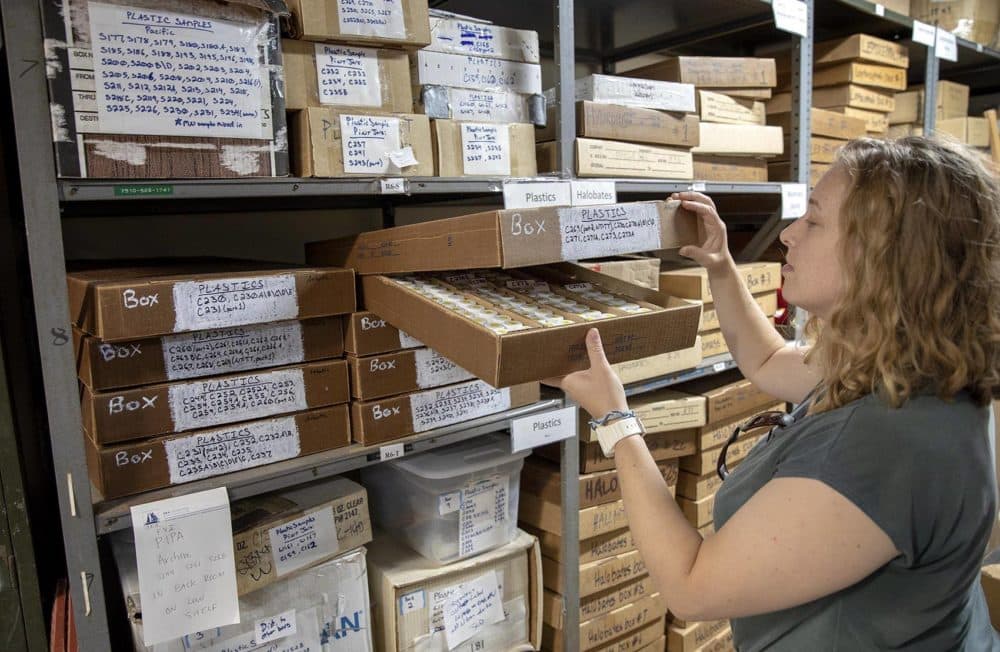
For nearly 50 years, the Sea Education Association has taken college students sailing on the ocean to study biology. During the weeks-long voyages, students drag a plankton net (imagine a super-long butterfly net) next to the ship twice a day and study what they catch.
"We use it to study the biology that’s out there, but then, in the 1980s, they started noticing that this plastic was coming up in the net as well," said Jessica Donohue, an oceanographer at SEA.
Most of what they found were microplastics — particles smaller than 5 millimeters — which often come from bigger pieces of plastic breaking down. And, like good scientists, the students and researchers started collecting the plastic bits and cataloging them.
Over 30 years the organization has archived thousands of samples, noting when and where they were found, and storing them in plastic baggies and glass vials. This archive of floating microplastics, stored in the basement at SEA's Falmouth headquarters, is now the largest data set of its kind in the world.
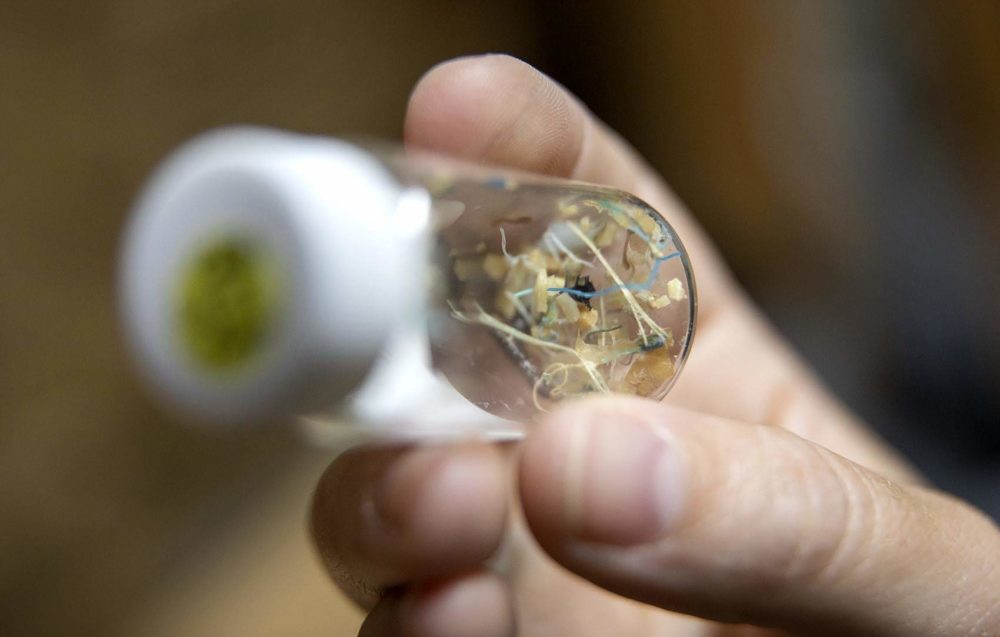
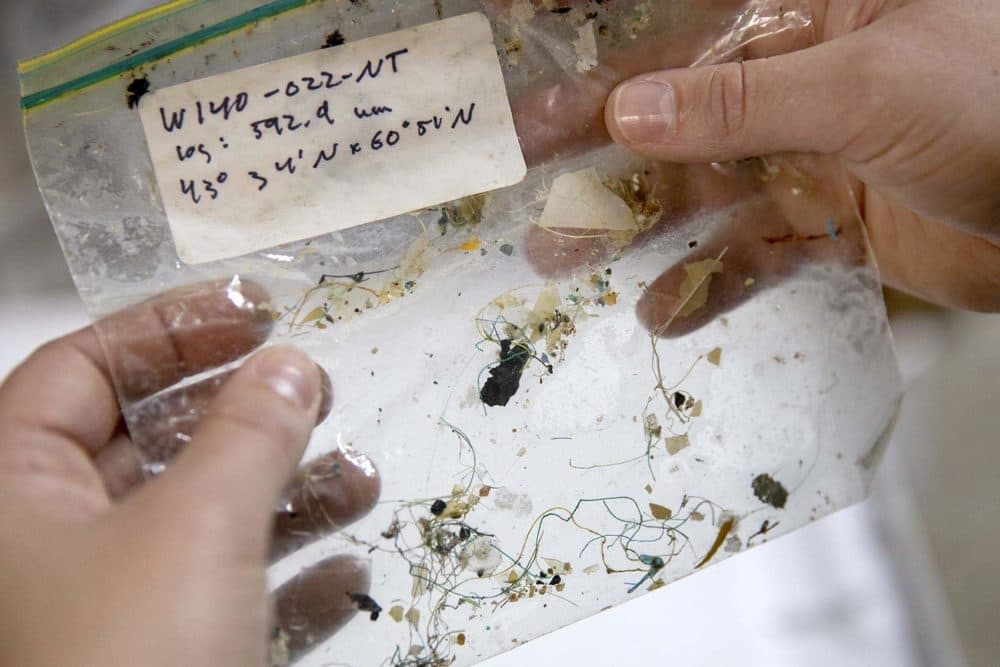
A lot of it looks like dandruff or dental floss, or "ugly confetti," Donohue said. But one person's trash is another's scientific treasure.
"Data like this is super important," Donohue said. "There are still a lot of unknowns. How much plastic is out there? Where is it? What form is it in? And if we don’t really know where it all is, we can’t really know all of the impacts."
Data like this, along with computer models, have given scientists a good sense of where microplastics are floating in the ocean. The plastic is mostly in five “accumulation zones” around the globe, carried by currents into huge gyres in the Atlantic, Pacific and Indian Oceans. Scientists have also estimated how much plastic is floating on the ocean's surface. It's between 93,000 and 236,000 metric tons.
That may sound like a lot, but it’s only a fraction of the estimated 4.8 to 12.7 million metric tons of plastic dumped in the ocean each year. And that missing plastic is a mystery.
Advertisement
"We haven't found where the big reservoirs are," said Kara Lavender Law, an oceanographer with the Sea Education Association, and one of the scientists who helped estimate plastic amounts in the ocean. "We don't know if most of the plastic is really in these giant lost fishing nets that are drifting around, or if most of it is in stuff that's sitting on beaches — whether it's household trash or fishing buoys that have blown ashore. And we don't know how much is sitting on the sea floor."
And where it ends up matters.
"Until we know where it is, we're not going know what organisms or communities are being affected," she said.
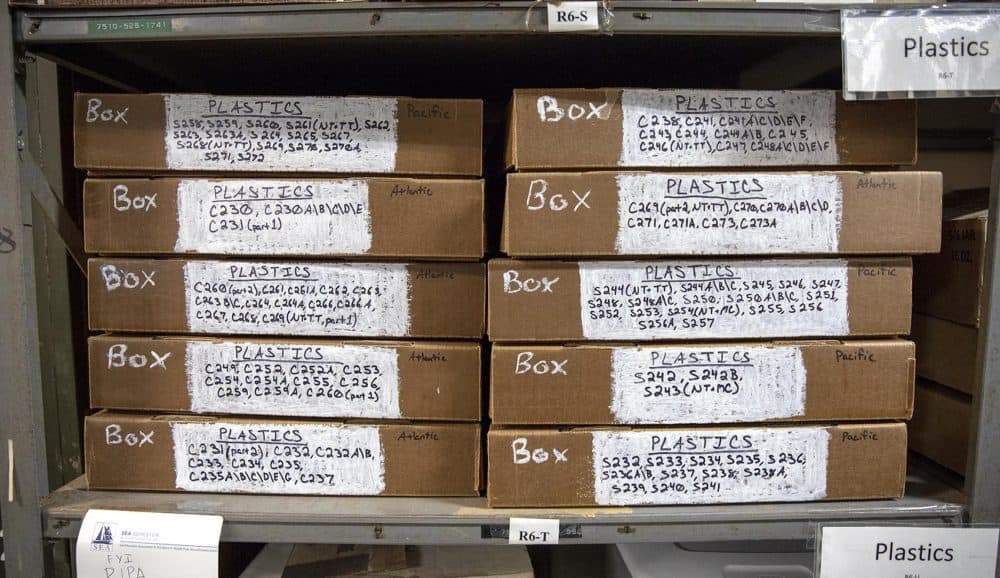
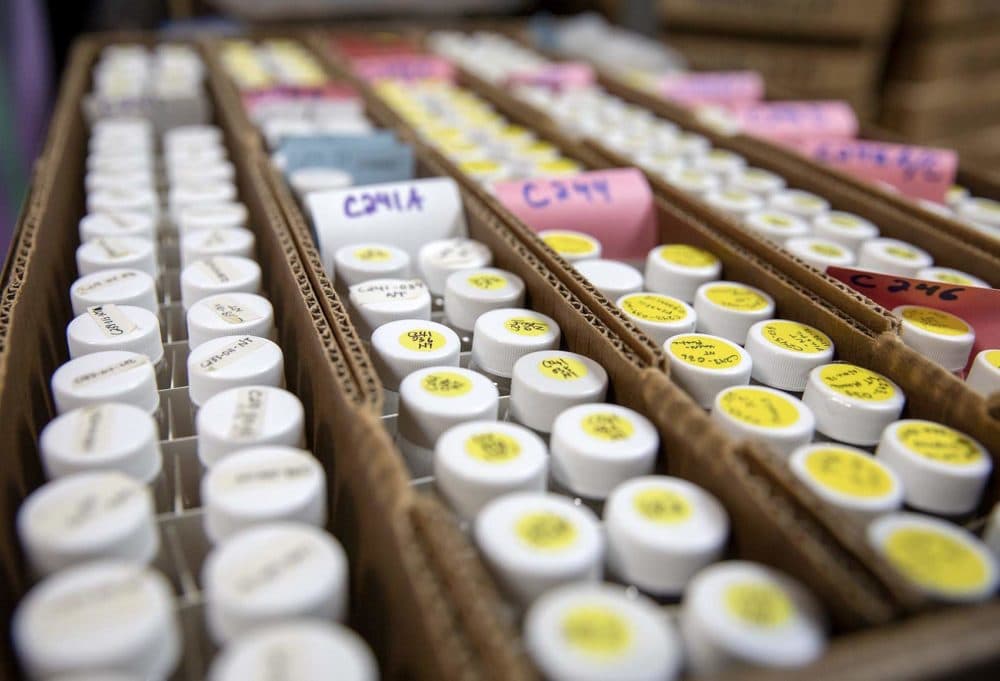
Some scientists suspect that many microplastics may not be floating on the surface or sinking to the bottom of the oceans. Some evidence hints that they’re hiding somewhere in between, in a potentially critical part of the ocean ecosystem.
"This is the area where basically the whole food chain in the ocean occurs," said Ethan Edson, who studied marine science at Northeastern University and stayed on to research ocean plastics. "So, if we’re talking about different fish that are ingesting plastics or different organisms that are ingesting plastics, it’s worse if plastic is in the part of the water column where they are doing most of their feeding."
Laboratory experiments have found — unsurprisingly — that feeding microplastics to organisms can harm them. It can disrupt feeding and impair reproduction. But it's hard to say how these results translate to the actual ocean, since the amount of microplastics in the water column is still largely unknown.
That’s partly because the traditional way of gathering plastic samples – dragging a net alongside a ship – only collects plastic near the surface. That’s where researchers like Edson come in. At Northeastern, he designed an experimental sensor called "MantaRay" to analyze microplastic pollution in water.
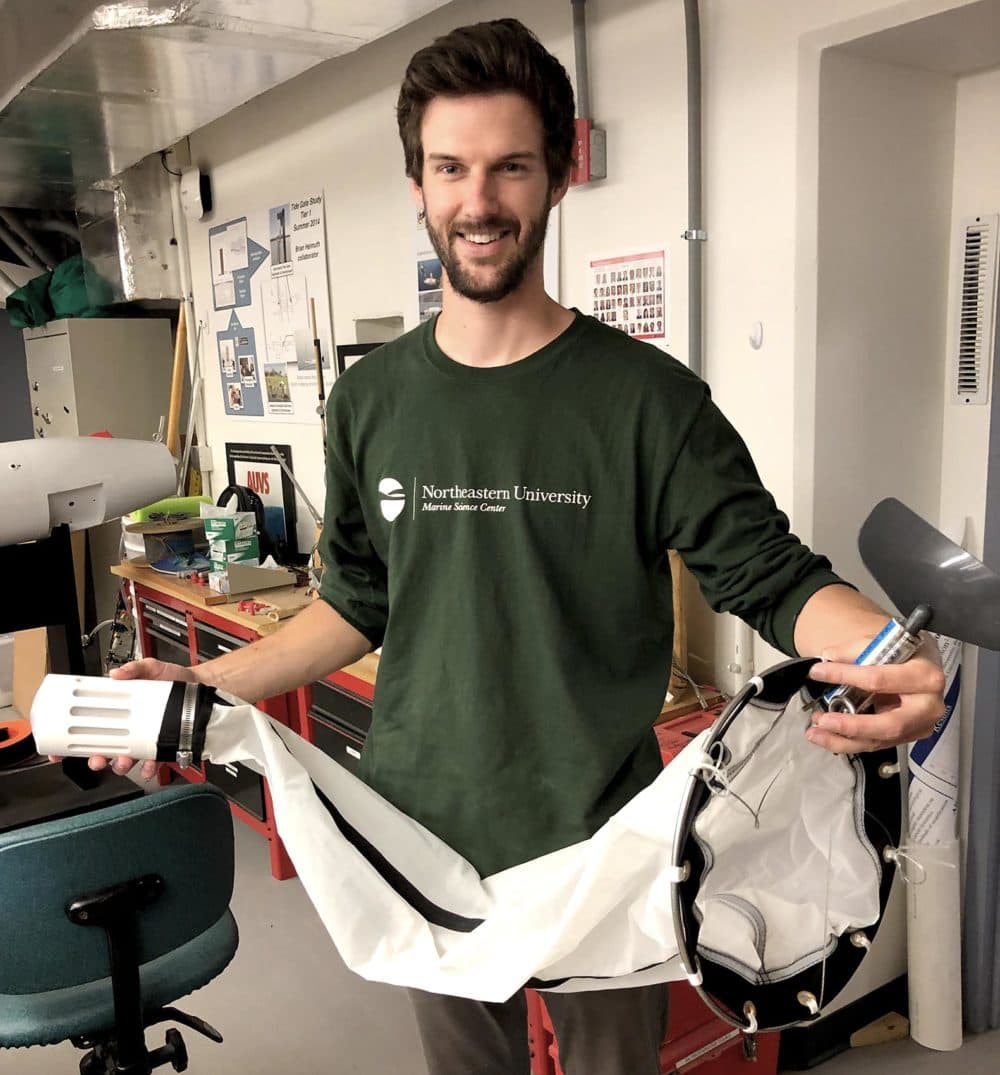
Edson hopes that devices like his might someday be small and cheap enough to be deployed by ships all over the oceans.
"If we do determine that these plastics are having a detrimental impact we need better ways to manage and monitor and make sure that plastics are below a certain level, like any other contaminant," Edson said. "So we need to figure out more efficient ways to quantify these plastics.
Because to find out what the plastic is doing — to the oceans and to us — first we need to find out where it is.
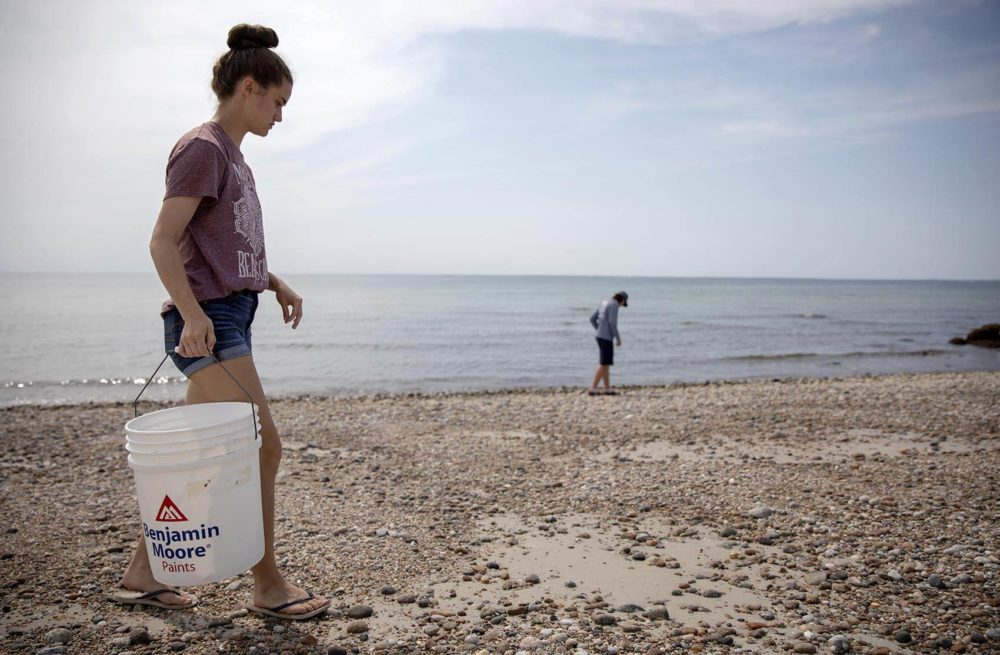
This segment aired on October 18, 2019.
